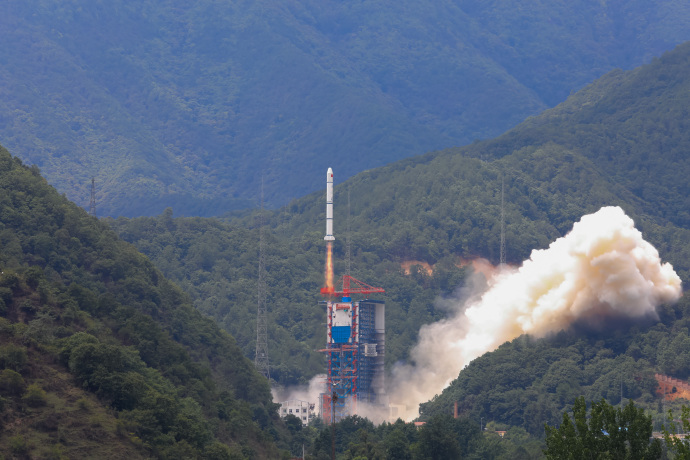
China launched three more Yaogan 30 military reconnaissance satellites June 18 aboard a Long March 2C rocket.
The launch of another triplet of Yaogan 30 satellites makes 27 similar spacecraft deployed on a series of Long March 2C rocket launches since 2017.
The latest trio of Yaogan 30 satellites took off at 2:30 a.m. EDT (0630 GMT) June 18 from the Xichang launch base in southwestern China.
The Long March 2C launcher, with a height of roughly 140 feet (43 meters), climbed away from a launch complex nestled in green hills at Xichang with about 660,000 pounds of thrust.
The two-stage rocket delivered the three Yaogan 30 satellites, along with a civilian data relay craft, into an on-target orbit, according to the China Aerospace Science and Technology Corp., or CASC, the lead government-owned contractor for China’s space program.
U.S. military tracking data indicated the satellites launched into an orbit about 370 miles (600 kilometers) above Earth, at an inclination of 35 degrees to the equator.
CASC confirmed the launch carried the ninth triplet of Yaogan 30 satellites, which the group said will be “mainly used for electromagnetic environment detection.”
The Chinese government uses the Yaogan name for the country’s military satellites, and the Yaogan 30 family is believed to be designed for a signals intelligence mission.
Some analysts suggested the Yaogan 30 family of satellites could be testing new electronic eavesdropping equipment, or helping the Chinese military track U.S. and other foreign naval deployments. But details about the spacecraft and their missions have not been disclosed by the Chinese government.
The other satellite launched Thursday was Tianqi 14, a small commercial data relay satellite for the Beijing-based company Guodian Gaoke.
Email the author.
Follow Stephen Clark on Twitter: @StephenClark1.
